SUMMARY
This is AI generated summarization, which may have errors. For context, always refer to the full article.
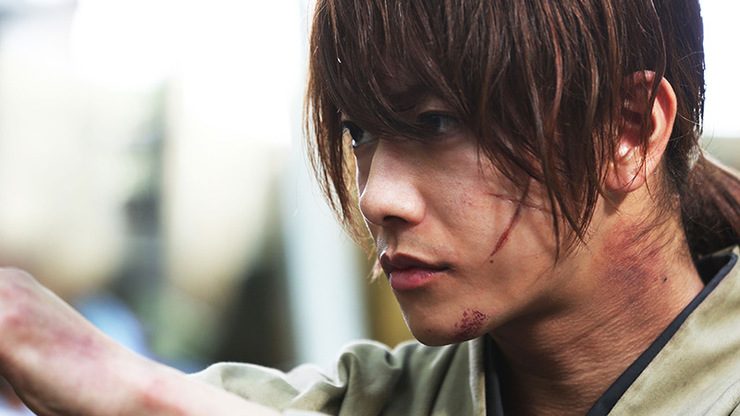
With the stage elaborately and competently set by its predecessor Rurouni Kenshin: Kyoto Inferno, fans have been waiting on edge for the final showdown between reformed assassin Kenshin Himura and his most formidable opponent yet, Makoto Shishio. (READ: Rurouni Kenshin: The Legend Ends movie review: Fond, fiery farewell)
Below, read along to two fans’ reactions to the final film about the former killer who has sworn never to kill again.
Quick recap: Kenshin Himura is a former swordsman, previously known as Battosai the Manslayer. Just as Japan is on the cusp of a new political era, moving towards a more peaceful time, he gives up killing and takes up a wanderer’s life.
In the first movie Rurouni Kenshin, he meets Kaoru Kamiya, Megumi Takani, Yahiko Myojin, and Sanosuke Sagara, and settles in to a happy life living in Kaoru’s dojo, his new home.
But in Rurouni Kenshin: Kyoto Inferno, Kenshin faces off against Makoto Shishio, who took up the mantle of fearsome assassin after Kenshin went under the radar. He plans, of course, to seize control of Japan, and employs a large army of nefarious characters to help him do it, among them the Ten Swords.
With no choice, Kenshin, to the chagrin of his friends back home, sets off to defeat Shishio – but what happens to his vow never to kill again?
Below, two fans, Najee and Tim, weigh in on the movie – what was cool, what was lacking, and what was downright different?
Najee and Tim: Straddling the line between history and historical fantasy, the Japan seen in The Legend Ends retains a timeless beauty, even though she is in the throes of a great political struggle. Still, Shishio’s attacks have taken their toll on the city.
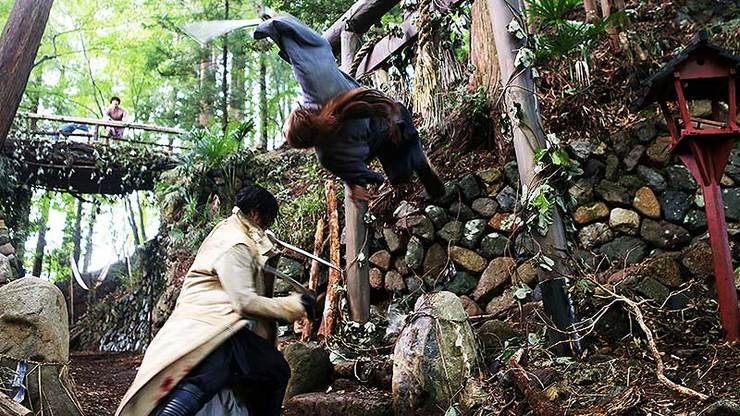
 Najee: Kyoto looked lackluster with Kenshin and Kaoru both missing, Okina dangerously injured, and Shishio steadily spreading fear in the new government. I thought it was an excellent way to make the audience feel tense the whole movie, and to communicate that there was something sinister going on underneath the surface.
Najee: Kyoto looked lackluster with Kenshin and Kaoru both missing, Okina dangerously injured, and Shishio steadily spreading fear in the new government. I thought it was an excellent way to make the audience feel tense the whole movie, and to communicate that there was something sinister going on underneath the surface.
Audiences also need to prepare for great action sequences, seamless scene transitions, and breathtaking cinematography. Visually speaking, The Legend Ends may have been the best of all 3 movies.
The feel
The original anime series needed 35 episodes just for the Kyoto Arc, giving the creators and audience ample time to invest in the individual stories of a large cast. This luxury was not afforded in the film-adaptations, so there were scenes in The Legend Ends that inevitably felt contrived.
For example, the conclusion of Kenshin and Soujiro’s rematch became painful to watch as we see a defeated Soujiro unravel too quickly and without much effort. The weight of his wails didn’t seem to match the investment in his character. Other beloved members of the Ten Swords such as Usui and Anji suffered the same fate.
However, one of the film’s strongest points is its ability to tread the fine line between the man and myth of Hitokiri Battosai. It draws back the curtain on much of Kenshin’s mystique and revisits flashbacks from previous movies, as Kenshin and master Hiko Seijuro engage in a duel of wills.
Though seemingly unflappable, Kenshin is reduced to a bruised and panting pupil who has one more thing to learn. It’s a story shared by the boy Shinta, the boy within Kenshin who gifts him with a deep sense of humanity.
The way Kenshin’s inner conflict is portrayed is admirable – it’s well expressed without ever being stated explicitly and culminates in one of those super secret Hiten Mitsurugi techniques near the end.
 Najee: The Legend Ends definitely has fewer lighthearted moments because of its more serious tone. Otomo also changed the storyline significantly here, and character development was handled haphazardly.
Najee: The Legend Ends definitely has fewer lighthearted moments because of its more serious tone. Otomo also changed the storyline significantly here, and character development was handled haphazardly.
I was really excited to see the Ten Swords on the big screen, and was sorry to note that all of them were reduced to costumed caricatures. The characters of Aoshi, Misao, and Soujirou left me underwhelmed, as well. All Kaoru did was look pretty.
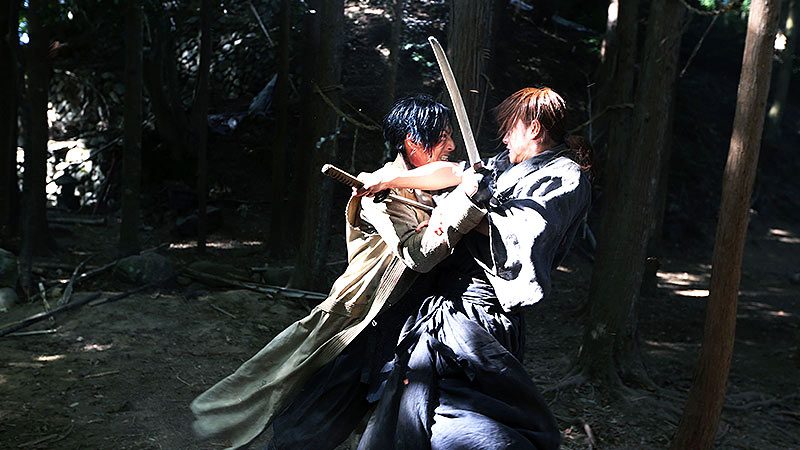
I left the theater feeling as if the integrity of these beloved characters were shortchanged in order to accommodate a clearer, singular narrative between Kenshin and Shishio (plus longer and more incredible fight scenes).
But I still enjoyed some pockets of glory: Hiko was cast so well, Megumi was given a moment of greatness, Kenshin gave an adorable reaction upon discovering that Kaoru was still alive, and Sanosuke (my favorite character) was endearing as ever.
 Tim: The Legend Ends excels at its gratuitous fight scenes, compensating for the lack of competent opponents in previous films by throwing them all in for this final chapter. Played out in 4 major movements, each fight is a tense little set piece, and Kenshin doesn’t dally.
Tim: The Legend Ends excels at its gratuitous fight scenes, compensating for the lack of competent opponents in previous films by throwing them all in for this final chapter. Played out in 4 major movements, each fight is a tense little set piece, and Kenshin doesn’t dally.
His enemies are motivated and we’re convinced – whether he’s fighting Aoshi or the fleet-footed Soujiro. It’s unfortunate that by the time we reach the penultimate fight scene with Shishio, it proves to be more divisive than decisive.
Whether you’ll be impressed or not hinges on your willingness to be carried along by what appears to be a sparring match instead of a duel to the death. By this point, the movie’s also dragged on for too long, and we aren’t willing to give Shishio 15 minutes of our time.
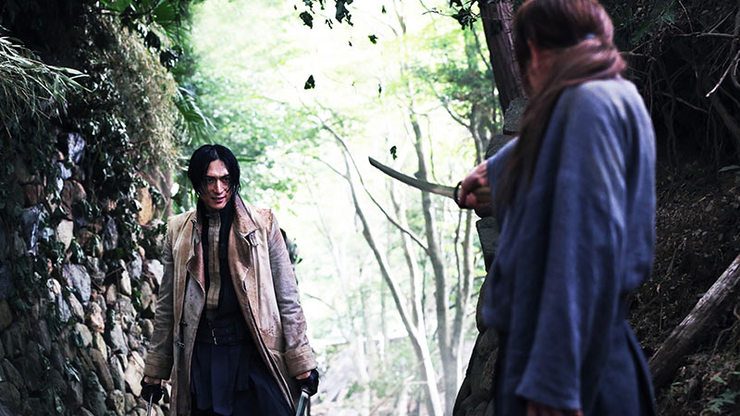
The verdict
 Najee: It was difficult to admit to myself that The Legend Ends was my least favorite film of the trilogy, because I wanted to like it so much. Nevertheless, one poorly executed movie cannot cancel out all the beauty that was contributed by the live action film adaptations, and as a fan, I am still so grateful to the whole project for such a colossal feat.
Najee: It was difficult to admit to myself that The Legend Ends was my least favorite film of the trilogy, because I wanted to like it so much. Nevertheless, one poorly executed movie cannot cancel out all the beauty that was contributed by the live action film adaptations, and as a fan, I am still so grateful to the whole project for such a colossal feat.
Two out of 3 is not bad at all. I would still recommend it and watch it again, regardless of The Legend Ends.
Tim: My dilemma in seeing this third installment was the exceedingly high expectations I had for it. You could watch it for the fight scenes, but the last movie is heavy-handed.
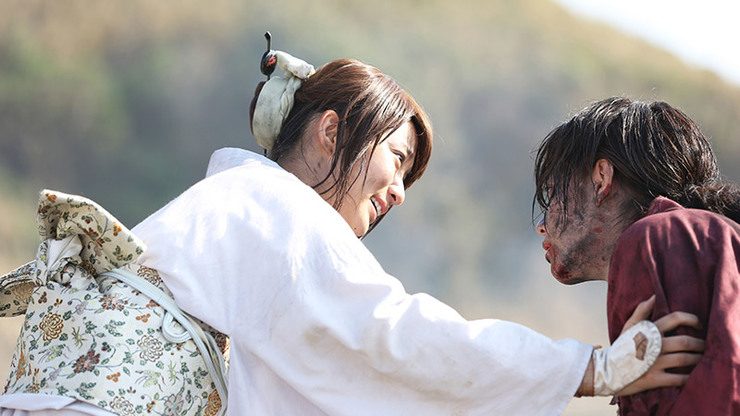
I appreciated the tighter plot, and those great character moments for Kenshin. Kaoru, however, is more of a stand-in, and the epilogue is undeserved. My inner child wants to be convinced, but my older self is at least willing to admit that it’s good enough. – Rappler.com
After years of silence, Najee’s RK fangirl self reared her ugly head last 2012, when the first live-action film was released. When not fangirling over RK, she serves in the nonprofit sector, helping and advocating for street children at Virlanie Foundation, Inc.
In his head, Tim has visited a thousand worlds and is at a loss to describe even the tinest mote of dust. It’s the best and the worst problem a human being could possibly have.
More Rurouni Kenshin on Rappler:
- ‘Rurouni Kenshin: The Legend Ends’ Review: Fond, fiery farewell
- LIVE BLOG: Blow-by-blow updates from Rurouni Kenshin stars 2-day visit
- VIDEO: Watch Rappler’s spoiler-free 3-on-1 interview with Kenshin stars
- VIDEO: See the entire Q&A at the public press conference, Munetaka hugs a fan, Takeru blows a kiss to fans
- VIDEO: See the Rurouni Kenshin jeepney, watch Takeru say “Oro,” stars named cultural friendship ambassadors
- VIDEO: Rurouni stars say “Mahal ko kayo!” plus exclusive red carpet cast interviews
- ‘Rurouni Kenshin: Kyoto Inferno’ Movie review: A promise to keep
- Quotables: What Rurouni Kenshin characters think of their characters
- See the actual costumes of Kenshin, Sano, and Aoshi in the flesh
- WATCH: Main trailer for Rurouni Kenshin sequel released
- In Photos: Amazing Rurouni Kenshin cosplay
- WATCH: Rurouni Kenshin director on movie twists and turns
Add a comment
How does this make you feel?
There are no comments yet. Add your comment to start the conversation.